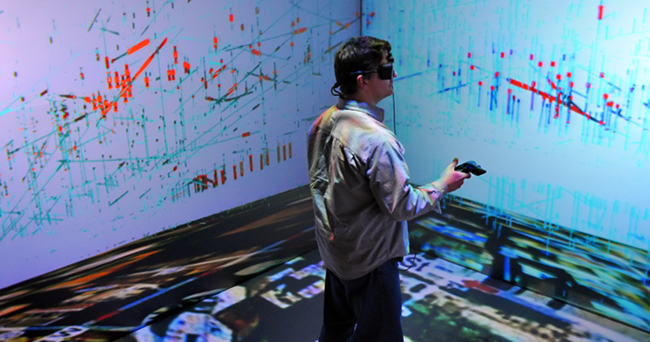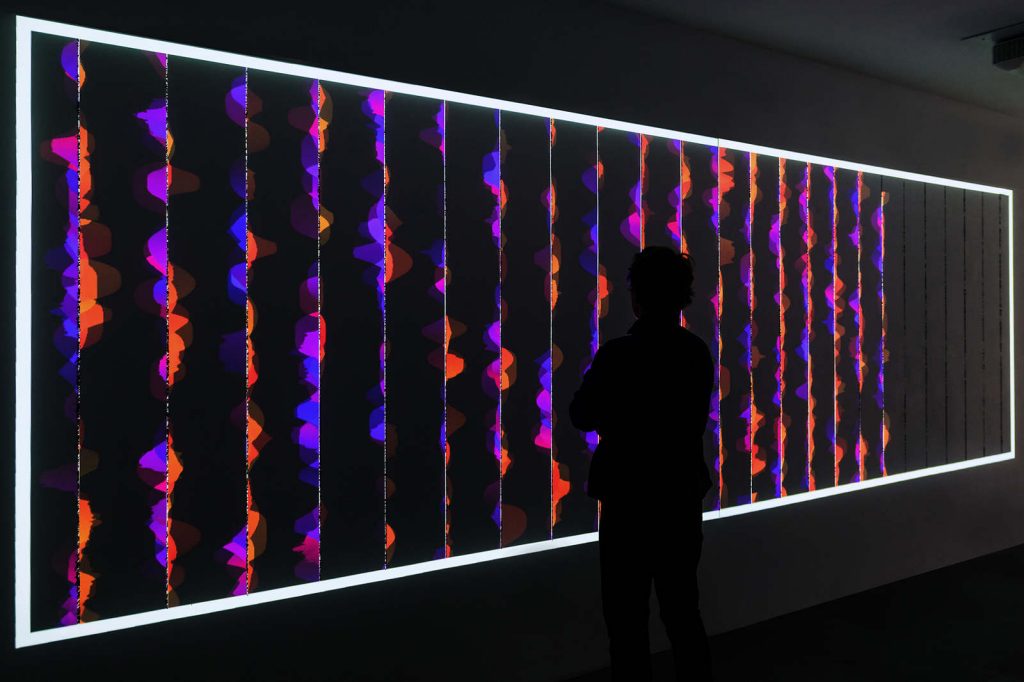Both the projects below are sound visualization art projects and they intrigue me as transferring invisible elements to visible. Mark Hasegawa-Johnson and Thomas Huang of the Human-Computer Intelligent Interaction research theme led a collaboration that developed new computational methods for creating graphical visualizations of large audio files. The visualizations allow the user to scan an audio recording at 200 times that of real-time, enabling them to discover unexpected, or anomalous, events.
Using an analogy to items sometimes hidden in video games by manufacturers called “Easter eggs”, the researchers employed the term to refer to these unexpected events. Hasegawa-Johnson said the software is designed to free up the analyst by having the computer perform certain tasks, and render the data visually, such as with a spectrogram. The technology is able, for example, to analyze thousands of sound sources in an urban environment

Link: https://beckman.illinois.edu/news/2011/11/visualizingsound
News Feed is a data visualization and sound art installation that reads major worldwide online newspapers, exposing the sentiment of news stories published. As new articles are published from major journals, VADER algorithm analyses and classifies them according to whether they are positive or negative in sentiment. These results are then interpreted and transformed into sound and visual meanings, making the audiovisual installation to perform accordingly with the data.

Link: https://rudolfoquintas.com/News-Feed
![[OLD FALL 2019] 15-104 • Introduction to Computing for Creative Practice](wp-content/uploads/2020/08/stop-banner.png)